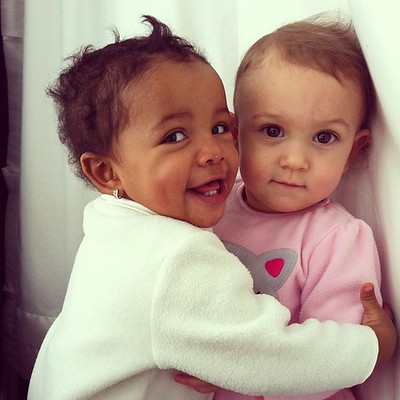Bringing your whole self to work takes courage.
 What happens when you bring your whole self to work? Are you embraced, rejected, or ignored?
What happens when you bring your whole self to work? Are you embraced, rejected, or ignored?
If you’re not invited to meetings because you ask difficult questions, what does that say?
When you call someone on their behavior, does that get you closer to a promotion?
When you’ve done the work before but no one asks for your guidance, what does that say?
When you say the quiet part out loud, is the good for your career?
When you solve a difficult problem but the solution is rejected due to NIH, what does that say?
When you bring up the inconvenient truth when everyone else is afraid to, what do people think of you?
When you can ask anyone in the company for help and they help you, it’s because they know you helped a lot of other people over your career.
When someone gets promoted out of your team but still wants to meet regularly with you, it’s because they value you. And they value you because you valued them.
When a senior leader is out of ideas and they come to you for help privately, it’s because you earned their trust over the years.
When someone you helped fifteen years ago tells the story publicly of how you “saved their career” it’s because you made a difference.
When you bring your whole self to work, you know some won’t like it, some won’t care, and some will love it.
And everyone will know you care enough to give it your all.
Image credit — Tambaco the Jaguar
The Friendship Framework
 When your friend is having a bad time of it, you don’t criticize, you empathize.
When your friend is having a bad time of it, you don’t criticize, you empathize.
When you think of your friend, you check in.
When your friend is happy, you are happy with them.
When your friend is lonely, you don’t ignore, you are right there with them.
When your friend is struggling, you check in more frequently.
When your friend is in a rut, you jump in with them and give them what you can.
When your friend makes a mistake, you don’t judge, you seek to understand.
When your friend achieves their goal, you celebrate with them.
When your friend is angry, you ask of their heart’s best intention.
When your friend is confused, you tell them they seem confused and ask what’s going on.
When your friend judges themself, you tell them they are worthy of better treatment.
It’s easy to treat our friends well because we care about them.
May we learn to see ourselves as friends and make it easier to care for ourselves and treat ourselves well.
Image credit — Fuschia Foot
Working In Domains of High Uncertainty
 X: When will you be done with the project?
X: When will you be done with the project?
Me: This work has never been done before, so I don’t know.
X: But the Leadership Team just asked me when the project will be done. So, what should I say?
Me: Since nothing has changed since the last time you asked me, I still don’t know. Tell them I don’t know.
X: They won’t like that answer.
Me: They may not like the answer, but it’s the truth. And I like telling the truth.
X: Well, what are the steps you’ll take to complete the project?
Me: All I can tell you is what we’re trying to learn right now.
X: So all you can tell me is the work you’re doing right now?
Me: Yes.
X: It seems like you don’t know what you’re doing.
Me: I know what we’re doing right now.
X: But you don’t know what’s next?
Me: How could I? If this current experiment goes up in smoke, the next thing we’ll do is start a different project. And if the experiment works, we’ll do the next right thing.
X: So the project could end tomorrow?
Me: That’s right.
X: Or it could go on for a long time?
Me: That’s right too.
X: Are you always like this?
Me: Yes, I am always truthful.
X: I don’t like your answers. Maybe we should find someone else to run the project.
Me: That’s up to you. But if the new person tells you they know when the project will be done, they’re the wrong person to run the project. Any date they give you will be a guess. And I would not want to be the one to deliver a date like that to the Leadership Team.
X: We planned for the project to be done by the end of the year with incremental revenue starting in the first quarter of next year.
Me: Well, the project work is not bound by the revenue plan. It’s the other way around.
X: So, you don’t care about the profitability of the company?
Me: Of course I care. That’s why we chose this project – to provide novel customer value and sell more products.
X: So the project is intended to deliver new value to our customers?
Me: Yes, that’s how the project was justified. We started with an important problem that, if solved, would make them more profitable.
X: So you’re not just playing around in the lab.
Me: No, we’re trying to solve a customer problem as fast as we can. It only looks like we’re playing around.
X: If it works, would our company be more profitable?
Me: Absolutely.
X: Well, how can I help?
Me: Please meet with the Leadership Team and thank them for trusting us with this important project. And tell them we’re working as fast as we can.
Image credit – Florida Fish and Wildlife
X: Me: format stolen from Simon Wardley (@swardley). Thank you, Simon.
Happier and More Thankful
 What could we change to become happier?
What could we change to become happier?
Happiness comes when our reality (how things really are) compares favorably with our expectations. If happiness comes from the comparison between how things are and our expectations, wouldn’t we be happier with any outcome if we change our expectations of the outcome? But how are expectations defined? What makes an expectation an expectation? Where do our expectations come from?
If we expect to have no control over the outcome, wouldn’t we be happier with any outcome? Aren’t we the ones who set our expectations? And hasn’t the Universe told us multiple times we don’t have control? If so, what’s in the way of giving up our expectations of control? What’s in the way of letting go?
What could we change to become more thankful?
Thankfulness comes when our reality, what we see or recognize, compares favorably with how we think things should be. If thankfulness comes from the comparison between what is and what should be, what if we changed our shoulds? Wouldn’t we be more thankful if we lessened our shoulds and reality compared more favorably? But how are shoulds defined? What makes a should a should? Where do our shoulds come from?
If we can help ourselves believe we don’t have control over how things should be, wouldn’t we be more thankful for how things are? And aren’t we the setters of our shoulds? And hasn’t the Universe often told us our shoulds have no control over it? If so, what’s in the way of giving up the belief that our shoulds have control over anything? What’s in the way of letting go?
Shoulds and expectations are close cousins and both influence our happiness and ability to be thankful.
At this Thanksgiving holiday, may we be aware of our shoulds and enjoy our friends and family as they are. May we be aware of our expectations and enjoy the venue, the food, the weather, and the conversations as they are. May we suspend our natural desire to control things and be happy and thankful for things as they are.
And may we love ourselves as we are.
Happy Thanksgiving.
Mike
Image credit — Bennilover
What does it mean to have enough?
 What does it mean to have enough?
What does it mean to have enough?
If you don’t want more, doesn’t that mean you have enough?
And if you want what you have, doesn’t that mean you don’t want more?
If you had more, would that make things better?
If you had more, what would stop you from wanting more?
What would it take to be okay with what you have?
If you can’t see what you have and then someone helps you see it, isn’t that like having more?
What do you have that you don’t realize you have?
Do you have a pet?
Do you have the ability to walk?
Do you have friends and family?
Do you have people that rely on you?
Do you have a place where people know you?
Do you have people that care about you?
Do you have a warm jacket and hat?
When you have enough you have the freedom to be yourself.
And when you have enough it’s because you decided you have enough.
Image credit — Irudayam
How People Grow
 I was invited to an important meeting. Here’s how it went.
I was invited to an important meeting. Here’s how it went.
I was invited to an important meeting. I want you to attend with me.
I was invited to an important meeting with my boss. Will you join me?
I was invited to an important meeting but I cannot attend. Will you go in my place?
I was invited to an important meeting but the company will be better served if you attend.
I heard you were invited to the meeting instead of me. I think that’s great.
Here’s a presentation I put together. I want to explain it to you.
Here’s a presentation I put together. What does it say to you?
Here’s a presentation I put together. What’s missing?
I want you to create a draft of a presentation which we’ll review together.
I want you to create the presentation. I’ll review it if you want.
I want you to create the presentation and deliver it.
I heard you helped someone create an interesting presentation and it went over well. I’m happy you did that.
This is the situation and this is what I want you to do.
This is the situation and this is what I think we should do. What do you think?
This is the situation. What do you think we should do?
This is the situation. What are you going to do?
What’s the situation?
What’s the situation and what will you do?
What was the situation and what did you do?
I heard you helped someone with their situation. That made me smile.
Image credit — Bastian_Schmidt
There is nothing wrong with having problems.
 When you are stuck, often the problems you can describe are not the problems that are in the way.
When you are stuck, often the problems you can describe are not the problems that are in the way.
The problems you solved last time make it more difficult to see new problems this time.
The problems you know of are not the problem.
When you have no problems, you have big problems.
When you have no problem, there is no way to justify additional resources.
When you have no problem, you better finish on time.
When you’re stuck on a problem, make it worse and solve it by doing the opposite.
Problems are not bad, even though bringing them to everyone’s attention may be bad for your career.
And if talking about problems is bad for your career, you are working at the wrong company.
Until you can explain the problem in plain language, you do not understand it.
And when you do not understand a problem, you can’t solve it.
Solutions start with a problem.
Two questions to ask: Where is the problem and when does it occur?
Problems are solved with microscopes and not telescopes. Get close to the problem.
Your problem is not new. Someone has solved it in a different application, context, or product.
There are at least three ways to solve a problem: before it occurs, while it occurs, or after it occurs,
Sometimes solving a difficult problem requires the generation of an easily solvable problem. So be it.
Problems are more powerful than opportunities. Call them by their name.
Because without problems, there can be no solutions.
Image credit – Andy Morffew
What’s in the way of the newly possible?
 When “it’s impossible” it means it “cannot be done.” But maybe “impossible” means “We don’t yet know how to do it.” Or “We don’t yet know if others have done it before.”
When “it’s impossible” it means it “cannot be done.” But maybe “impossible” means “We don’t yet know how to do it.” Or “We don’t yet know if others have done it before.”
What does it take to transition from impossible to newly possible? What must change to move from the impossible to the newly possible?
Context-Specific Impossibility. When something works in one industry or application but doesn’t work in another, it’s impossible in that new context. But usually, almost all the elements of the system are possible and there are one or two elements that don’t work due to the new context. There’s an entire system that’s blocked from possibility due to the interaction between one or two system elements and an environmental element of the new context. The path to the newly possible is found in those tightly-defined interactions. Ask yourself these questions: Which system elements don’t work and what about the environment is preventing the migration to the newly possible? And let the intersection focus your work.
History-Specific Impossibility. When something didn’t work when you tried it a decade ago, it was impossible back then based on the constraints of the day. And until those old constraints are revisited, it is still considered impossible today. Even though there has been a lot of progress over the last decades, if we don’t revisit those constraints we hold onto that old declaration of impossibility. The newly possible can be realized if we search for new developments that break the old constraints. Ask yourself: Why didn’t it work a decade ago? What are the new developments that could overcome those problems? Focus your work on that overlap between the old problems and the new developments.
Emotionally-Specific Impossibility. When you believe something is impossible, it’s impossible. When you believe it’s impossible, you don’t look for solutions that might birth the newly possible. Here’s a rule: If you don’t look for solutions, you won’t find them. Ask yourself: What are the emotions that block me from believing it could be newly possible? What would I have to believe to pursue the newly possible? I think the answer is fear, but not the fear of failure. I think the fear of success is a far likelier suspect. Feel and acknowledge the emotions that block the right work and do the right work. Feel the fear and do the work.
The newly possible is closer than you think. The constraints that block the newly possible are highly localized and highly context-specific. The history that blocks the newly possible is no longer applicable, and it’s time to unlearn it. Discover the recent developments that will break the old constraints. And the emotions that block the newly possible are just that – emotions. Yes, it feels like the fear will kill you, but it only feels like that. Bring your emotions with you as you do the right work and generate the newly possible.
image credit – gfpeck
There is always something to build on.
 To have something is better than to have nothing, and to focus on everything dilutes progress and leads to nothing. In that way, something can be better than everything.
To have something is better than to have nothing, and to focus on everything dilutes progress and leads to nothing. In that way, something can be better than everything.
What do you have and how might you put it to good use right now?
Everything has a history. What worked last time? What did not? What has changed?
What information do you have that you can use right now? And what’s the first bit of new information you need and what can you to do get it right now?
It is always a brown-field site and never a green-field. You never start from scratch.
What do you have that you can build on right now? How might you use it to springboard into the future?
When it’s time to make a decision, there is always some knowledge about the current situation but the knowledge is always incomplete.
What knowledge do you have right now and how might you use it to advance the cause? What’s the next bit of knowledge you need and why aren’t you trying to acquire that knowledge right now?
You always have your intuition and your best judgment. Those are both real things. They’re not nothing.
How can you use your intuition to make progress right now? How can you use your judgment to advance things right here and right now?
There’s a singular recipe in all this.
Look for what you have (and you always have something) and build on it right now. Then look again and repeat.
Image credit – Jeffrey
Too Much of a Good Thing
 Product cost reduction is a good thing.
Product cost reduction is a good thing.
Too much focus on product cost reduction prevents product enhancements, blocks new customer value propositions, and stifles top-line growth.
Voice of the Customer (VOC) activities are good.
Because customers don’t know what’s possible, too much focus on VOC silences the Voice of the Technology (VOT), blocks new technologies, and prevents novel value propositions. Just because customers aren’t asking for it doesn’t mean they won’t love it when you offer it to them.
Standard work is highly effective and highly productive.
When your whole company is focused on standard work, novelty is squelched, new ideas are scuttled, and new customer value never sees the light of day.
Best practices are highly effective and highly productive.
When your whole company defaults to best practices, novel projects are deselected, risk is radically reduced (which is super risky), people are afraid to try new things and use their judgment, new products are just like the old ones (no sizzle), and top-line growth is gifted to your competitors.
Consensus-based decision-making reduces bad decisions.
In domains of high uncertainty, consensus-based decision-making reduces projects to the lowest common denominator, outlaws the use of judgment and intuition, slows things to a crawl, and makes your most creative people leave the company.
Contrary to Mae West’s maxim, too much of a good thing isn’t always wonderful.
Image credit — Krassy Can Do It
The People Part of the Business
 Whatever business you’re in, you’re in the people business.
Whatever business you’re in, you’re in the people business.
Scan your organization for single-point failure modes, where if one person leaves the wheels would fall off. For the single-point failure mode, move a new person into the role and have the replaced person teach their replacement how to do the job. Transfer the knowledge before the knowledge walks out the door.
Scan your organization for people who you think can grow into a role at least two levels above their existing level. Move them up one level now, sooner than they and the organization think they’re ready. And support them with a trio of senior leaders. Error on the side of moving up too few people and providing too many supporting resources.
Scan your organization for people who exert tight control on their team and horde all the sizzle for themselves. Help these people work for a different company. Don’t wait. Do it now or your best young talent will suffocate and leave the company.
Scan your organization for people who are in positions that don’t fit them and move them to a position that does. They will blossom and others will see it, which will make it safer and easier for others to move to positions that fit them. Soon enough, almost everyone will have something that fits them. And remember, sometimes the position that fits them is with another company.
Scan your organization for the people who work in the background to make things happen. You know who I’m talking about. They’re the people who create the conditions for the right decisions to emerge, who find the young talent and develop them through the normal course of work, who know how to move the right resources to the important projects without the formal authority to do so, who bring the bad news to the powerful so the worthy but struggling projects get additional attention and the unworthy projects get stopped in their tracks, who bring new practices to new situations but do it through others, who provide air cover so the most talented people can do the work everyone else is afraid to try, who overtly use their judgment so others can learn how to use theirs, and who do the right work the right way even when it comes at their own expense. Leave these people alone.
When you take care of the people part of the business, all the other parts will take care of themselves.
Image credit – are you my rik?
 Mike Shipulski
Mike Shipulski